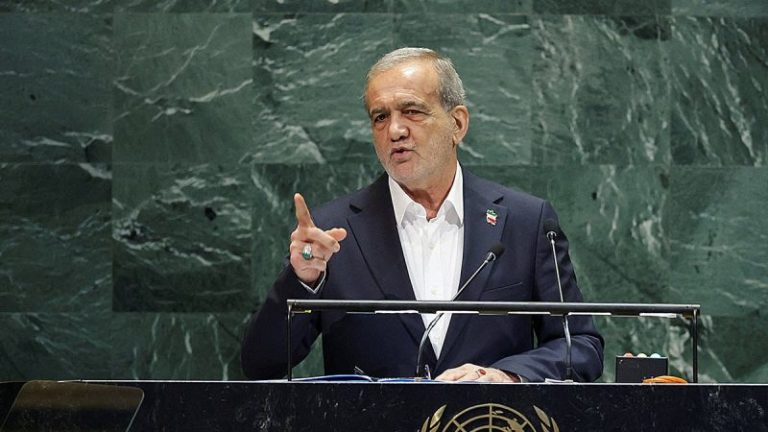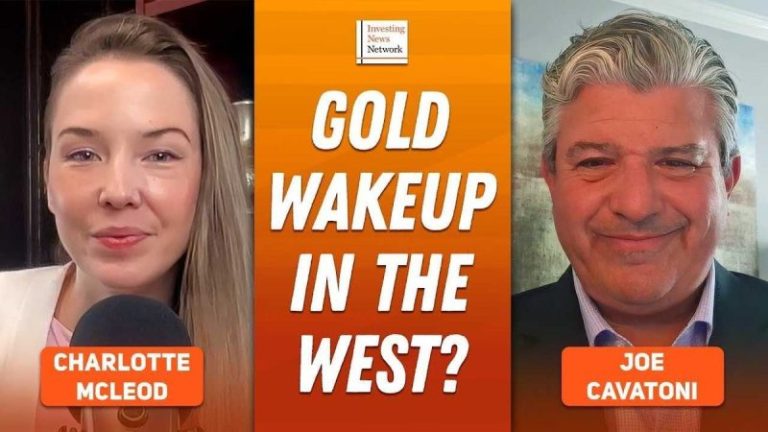As Iranian President Masoud Pezeshkian delivered his first address to the United Nations General Assembly on Wednesday, accusing the United States and Israel of ‘savage aggression,’ thousands of Iranian Americans and dissidents massed outside the building to denounce what they called the hypocrisy of the UN for giving Tehran’s rulers a platform.
Inside the hall, Pezeshkian claimed June’s U.S. airstrikes on Iran’s nuclear facilities amounted to a ‘grave betrayal of diplomacy’ and a violation of international law. He said the attacks killed civilians, scientists and intellectuals, while insisting Iran ‘never sought weapons of mass destruction.’
Outside the U.N., however, the message was very different. Protesters waving Iranian flags and holding placards declared that Pezeshkian did not represent the Iranian people.
Mitra Samani, a former political prisoner held for four years in Tehran’s notorious Evin Prison in the early 1980s, traveled from Los Angeles to attend. ‘We are here to say that the seat in the U.N. doesn’t belong to those murderous regime agents. It belongs to the people of Iran and their representatives, and we believe that is the National Council of Resistance of Iran,’ she told Fox News Digital.
Samani said she has attended the rally every year for three decades. ‘I promised myself when I was released from that dungeon that I would be the voice of my friends that I lost. That’s why I’m here every year.’
Nasser Sharif, chair of the Iranian American Community of California, said thousands came from 40 states to participate in the protest. ‘We’re here to support the Iranian Resistance, the National Council of Resistance of Iran, and to condemn the regime for its crimes against humanity,’ Sharif told Fox News Digital.
He added that the movement backs the plan for a free, secular, democratic republic in Iran: ‘We are asking the U.S. administration to put more pressure on the regime and side with the Iranian people and their desire for democratic change.’
Alireza Jafarzadeh, deputy director of the U.S. office of the National Council of Resistance of Iran, called the rally ‘an impressive show of force.’
‘Thousands of protesters supported the overthrow of the Iranian regime by the Iranian people, with no need for foreign boots on the ground or providing money and arms,’ he said.
Jafarzadeh also criticized the UN for giving Tehran a platform despite repeated condemnations of its human rights record. ‘It is appalling to see the world’s leading executioner play any role in any U.N. body dealing with human rights. It is like appointing a serial killer as a judge to rule on his own murders.’
Richard Goldberg, senior advisor at the Foundation for Defense of Democracies (FDD), said the UN’s willingness to elevate Iran reflects ‘an alternative reality.’
‘The U.N. is a lot like the Netflix show ‘Stranger Things.’ You walk through the door, the characters are the same, but it’s a horrifying alternative reality where a tyrannical, women-oppressing, nuclear-weapons-pursuing regime can serve as a leader of human rights, women’s rights and nuclear nonproliferation organizations,’ Goldberg said.
He added that Pezeshkian arrived in New York ‘with nothing — no popular support at home and no nuclear weapons program to scare the rest of the world,’ while facing looming U.N. sanctions that could destabilize Iran’s economy.
Behnam Ben Taleblu, senior director of FDD’s Iran program, said the speech was ‘short but not sweet.’
‘Sadly, these things have come to be expected from the U.N. when it comes to Iran. While the fact-finding mission on Iran languishes due to lack of funding and staff, the regime continues to be offered a platform to spew its invective and propaganda,’ he told Fox News Digital.
Taleblu highlighted the irony of Iran’s leadership roles in international organizations: ‘Can there be something more ironic than the Islamic Republic of Iran, which has long been a proliferator and seeking a nuclear weapon, being a vice president of the IAEA?’
He added that Pezeshkian’s remarks were overshadowed by recent comments from Supreme Leader Ayatollah Ali Khamenei. ‘While Pezeshkian and [Iranian negotiator Abbas] Araghchi were in NYC trying to stall and prevent SnapBack, Khamenei did not mince words when it came to no negotiations with America. ‘Supreme Leader’ is a title meant to be taken rather literally after all.’
U.S. President Donald Trump’s Middle East envoy Steve Witkoff said Wednesday that Washington was talking to Iran and that the U.S. had a ‘desire’ to realize a permanent solution to the dispute. But Iran’s Foreign Ministry told Reuters Thursday that the U.S. saying it wanted a diplomatic solution to Iran’s nuclear program was a ‘deception.’
‘America’s claim of a desire for diplomacy is nothing but deception and blatant contradiction; one cannot simultaneously bomb a country while engaging in diplomatic negotiations and speak of diplomacy,’ ministry spokesperson Esmaeil Baghaei said.










